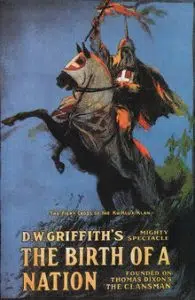
London, despite its name, is a unique city.
One grander footnote is the city’s relationship to the fabled Underground Railroad. During the height of slavery in the States, London was one of the stops for runaway slaves. It was also a place where, after they were done running, they could settle down.
That’s the story at least. Looking deeper, following the tracks, reveals a more complicated reality.
Al McGregor is an author and former news anchor. His novel, A Porous Border: A Novel of Canada and the American Civil War, looks at the history of Canada’s relationship with the U.S. It’s a history that isn’t too well known.
“It’s sad, but there are a lot of things that that that we lose track of. Sometimes our history is divvied up by our ethnic or religious origins. Sometimes it’s divided by geography.”
The more McGregor looked into the history, the more he realized just how buried it really is. In truth, a reason for why it isn’t that well known is just how little we know and can verify. He says that’s why his book is classified as fiction. Even though it is based on research, there is still so much we can’t uncover.
As much as there is uncertainty around the past, we do know a fair bit. Joe O’Neil is a local historian. He spoke about London’s role and how duplicitous it is.
“I like to always say that London was the last stop of the Underground Railroad and the birth of the American Civil War.”
“London had a very duplex almost bipolar attitude to the Underground Railroad. Because not only were we the site of some of the richest black community in all North America, we are also, during the American Civil War, the unofficial headquarters for the Confederacy in Canada.”
On the brighter side of London’s polar history is the Fugitive Slave Chapel. The Chapel was built almost 200 years ago by the black community in London. It was apart of a network of churches that helped antislavery in this country. It was a stop on the Underground Railroad.
The Fugitive Slave Chapel is a positive symbol, but, like O’Neil says, it isn’t all Londoners should focus on.
“. . . Our history has always been hard to dig up because you dig up one and you dig up the other . . . In the past, people only wanted to hear the good stuff. Now people want to hear the bad stuff. And throughout my whole life, I’ve always had a hard time trying to tell the whole story, both the good and the bad. So we have a lot to be proud of and a lot to be ashamed of.”
If the Fugitive Slave Chapel is something to be proud of, then London has a lot to be ashamed. Just down the road from where the Chapel stands, in fact, across the city, there remains artifacts of London’s association with the Confederacy.

Despite London being a city renowned for its efforts in the Underground Railroad, it’s also a city that harboured the inspiration for the most famous piece of KKK propaganda.
James Rufus Bratton was a doctor and the head of a branch of the KKK in South Carolina. After fleeing the states for a lynching charge, he sought refuge here in London. He’s rumoured to be the inspiration for The Birth of a Nation, the most famous piece of KKK dogma in history. He also became a prominent Londoner. He is one of many slave owners and racists that came to London.
In reality, the history is so broad, there are so many stories—from KKK meetings at the Dorchester Fair to Buxton to Uncle Tom’s Cabin and even lost confederate gold buried in London.
In the end, it’s hard to parse a meaning from the history. London had a role in anti-slavery efforts. London had a role in harbouring pro-slavery people.
The answer is found with Al McGregor, who’s been digging into this story for a while now.
“If you start out looking for a moral than I think things can get twisted. If you let the story just unfold bits and pieces of the moral side will begin to show up. I find that the deeper I get, the more I find there are more shades of gray than pure black and white.”





Comments